
.jpg/411px-Jack_Kirby_(1982).jpg)
(
Jack Kirby circa 1982.)
Last week I picked up a copy of Mark Evainer's long-awaited
Kirby: King of Comics (Abrams; 2008) , a loving and heartfelt appreciation of the comic book work of
Jack Kirby (1917-1994), the artist/storyteller who created or co-created such enduring characters as
Captain America ,
The Boy Commandos ,
Fighting American , the
Fantastic Four ,
The Incredible Hulk ,
The Silver Surfer ,
The New Gods ,
Mister Miracle ,
Kamandi ("The Last Boy on Earth"),
The Eternals and
Captain Victory , to name just a few. Evainer chronicles the life of Kirby (born
Jacob Kurtzberg) as he made his way up and out of New York City's "Hell's Kitchen" , his attempts to break into the animation and newspaper comic strip fields (the latter including a brief stint on the original
Blue Beetle in 1940)and his long association with writer/artist
Joe Simon, which lasted from the late 30s to the mid 50s.
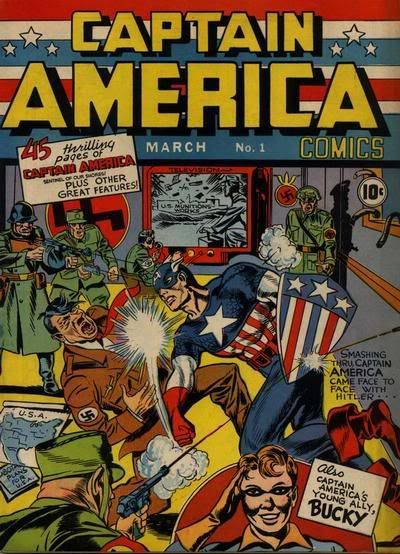
With Simon, Kirby ran a small "shop" that packaged original stories and art for various publishers in the fleding comic book field of the 1940s. They developed characters and books for
Timely (later
Marvel Comics Group), for whom they created
Captain America (above); DC (
Boy Commandos, revamped versions of
Sandman and
Manhunter) , Fawcett (the very first issue of
Captain Marvel Adventures , seen below) and Harvey (
The Boy Explorers;
Stuntman,
Captain 3-D;
Boys' Ranch ) .



For other publishers, such as Prize, Crestwood and Charlton, Simon and Kirby (after returning home in 1945 from WWII), oversaw & created other books for other publishers such as Prize and Charlton, even helping to come up with the first Romance Comic, as well as horror and crime books.
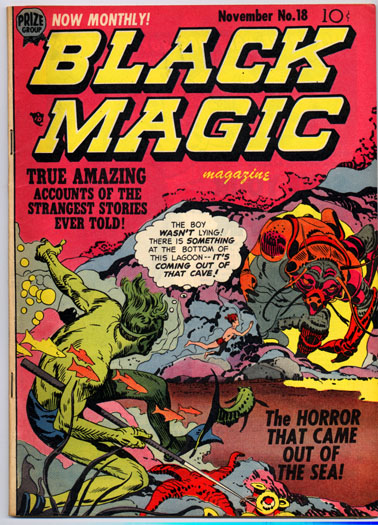

Simon & Kirby even ran their own comic book company for awhile, publishing such books as
Foxhole (Kirby's favorite of the period, as he had a lot of emotional issues regarding his service in Europe during World War II).
The advent of Congressional crackdowns on the comics publishers in the mid-50s (when comics were blamed for kids committing crimes and standing up against parental & social authority) resulted in many comic companies shutting down. Simon & Kirby, now without clients or employers,ended their professional partnership (although they stayed friends) and Kirby, a child of the Depression who had a wife & family to feed (and feared being unable to provide for them), sought out work elsewhere.

After briefly finding work at DC again (where he created
Challengers of the Unknown and revamped
Green Arrow), a horrible lawsuit over the "Sky Masters" comic strip with one of DC's editors led Kirby to be blackballed at the company in 1958. A brief reunion with Simon on
Archie Comics' The Fly eventually led Kirby to Marvel Comics in the late 50s, where he toiled on the company's horror & western comics.
But in 1961, with writer/editor
Stan Lee , Kirby began a new era in comics: the larger-than -life superheroes who, like the readers, had problems that weren't always solved overnight.

Beginning with the first issue of
Fantastic Four (cover dated November, 1961), Lee & Kirby started a whole new line of characters (pictured below) that revolutionized the field. Comics suddently weren't for kids anymore, as readers young & old identified with the Marvel characters developed by Lee & Kirby. (The books became especially popular on college campuses.)







Though the books became popular, Kirby felt ignored and marginalized by Marvel's owners and left the company in 1970 to work at DC (which lifted their "no-hire" policy toward him; by this time Kirby also wasn't happy with Stan Lee getting all the creative credit for their work together.) As artist AND writer/editor, he developed the "Fourth World" series of interlocking titles (
The Forever People ;
The New Gods;
Mister Miracle), tying them in with regular DC continunity (via
Superman's Pal Jimmy Olsen), but sales were low & the books were cancelled (except Olsen, which Kirby had already left).
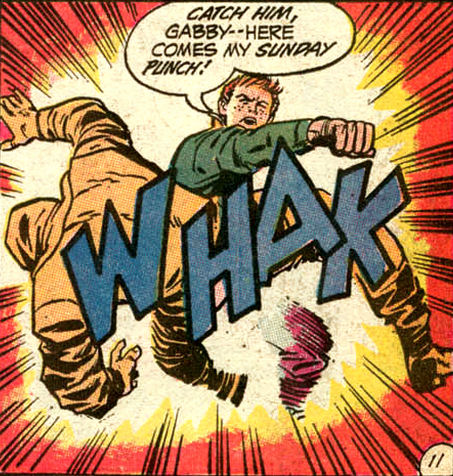
(
Jimmy Olsen as only Kirby could do him.)




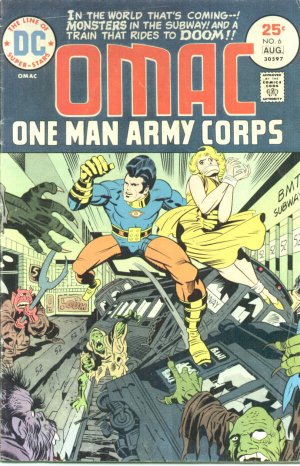
Five years later Kirby returns to Marvel, only to be crushed and denigrated by younger colleagues as "Jack the Hack" (in part due to deteriorating eyesight, though Kirby didn't dare tell anyone about that at the time). Despite the hostile atmosphere, Kirby does exciting (if short-lived) work on
Captain America,
The Black Panther and a new creation,
The Eternals. An eventual switch to Saturday Morning Animation in 1978 (where Kirby actually got
Health Benefits for the first time in 40 years from an employer!) and freelance work for DC and smaller publishers rounded out his professional life until his death.

(
The Eternals #1 from 1976. Now, over 30 years later, I finally appreciate the appeal of this series.)
Overall, despite reading how horrible Kirby was treated by his various employers (DC, at least, tried & succeeded in getting Kirby some merchandising profits from toys & cartoons based on his
New Gods characters in the mid-80s),
Kirby: King of Comics is a Kirby lover's treasure trove. There's so much here (yes, there are reproductions of covers & original penciled art) that one reading alone isn't enough. Recommended!
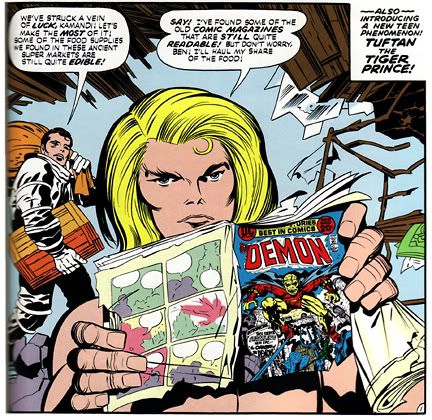
-Ed



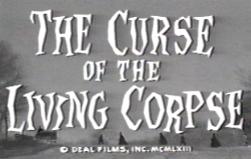

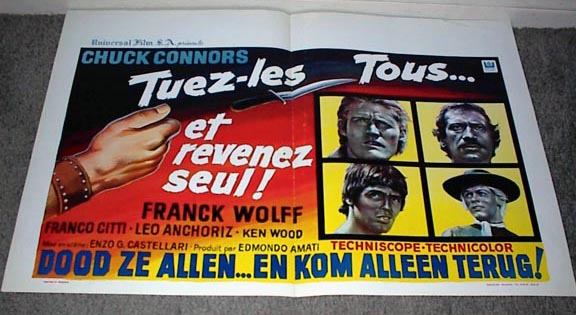

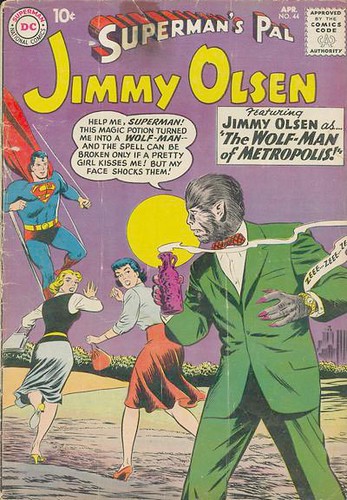







.jpg/411px-Jack_Kirby_(1982).jpg)




















